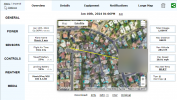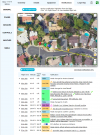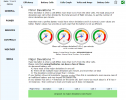...battery showed fully charged, but once I started my flight, thankfully I only climbed 200ft about to go out and all of a sudden “critical low battery” reared its ugly face and it started to automatically descend
...Long story but I’m wondering should I just recycle and get rid of that battery just to be safe? I’ve flown a few flights since without any issues.
If that battery was freshly fully charged just close to this flight...
That battery had most probably developed a high internal resistance over the years & use (& maybe abuse?)... so when you ascended up to those 200ft the amp draw made the voltage dive & one or all cells went below 3.0V & triggered the critical low voltage auto landing, if it also was colder ambient temps (colder batteries always have higher internal resistance) that could have contributed.
You should really start to upload your flight logs to a free Airdata account & familiarize your self with how your batteries behave & which of them that regularly misbehaves & comes close to critical, when it comes to voltage drops & cell deviations... neither of these battery data will show from a simple visual inspection, instead the consequences will just surprise you during flight.
If any of the batteries turn out to regularly show major voltage drops with even moderate commands (for instance, usually only one or the other full ascend or horizontal flight... & not in Sport mode) & maybe gets worse in colder or really hot ambients, you should monitor that battery closely & use it with a sudden triggered critical low voltage auto landing in the back of your mind... or even only use it for desk purposes.
Below common battery data is always good to keep track on, they indicate wear & give signs of how much risk it is to use them for flight duty. Out from these you can in time take decisions about continue to use them for flight duty, only use them for desk duties or if you should dispose of them asap (if swelling, it should be disposed of immediately). AND... just to have it said, you can't draw any firm conclusions from a single flight... it's the trend that matters.
- Remaining capacity (will be noticed in real life out from the regular achieved flight time)
- Tendency to get major voltage drops during amp draw (will not show on the outside)
- Tendency to develop major cell deviations during use (will not show on the outside)
- Swelling due to internal gassing caused by a electrolyte decomposition (this can easily be seen on the outside)



























